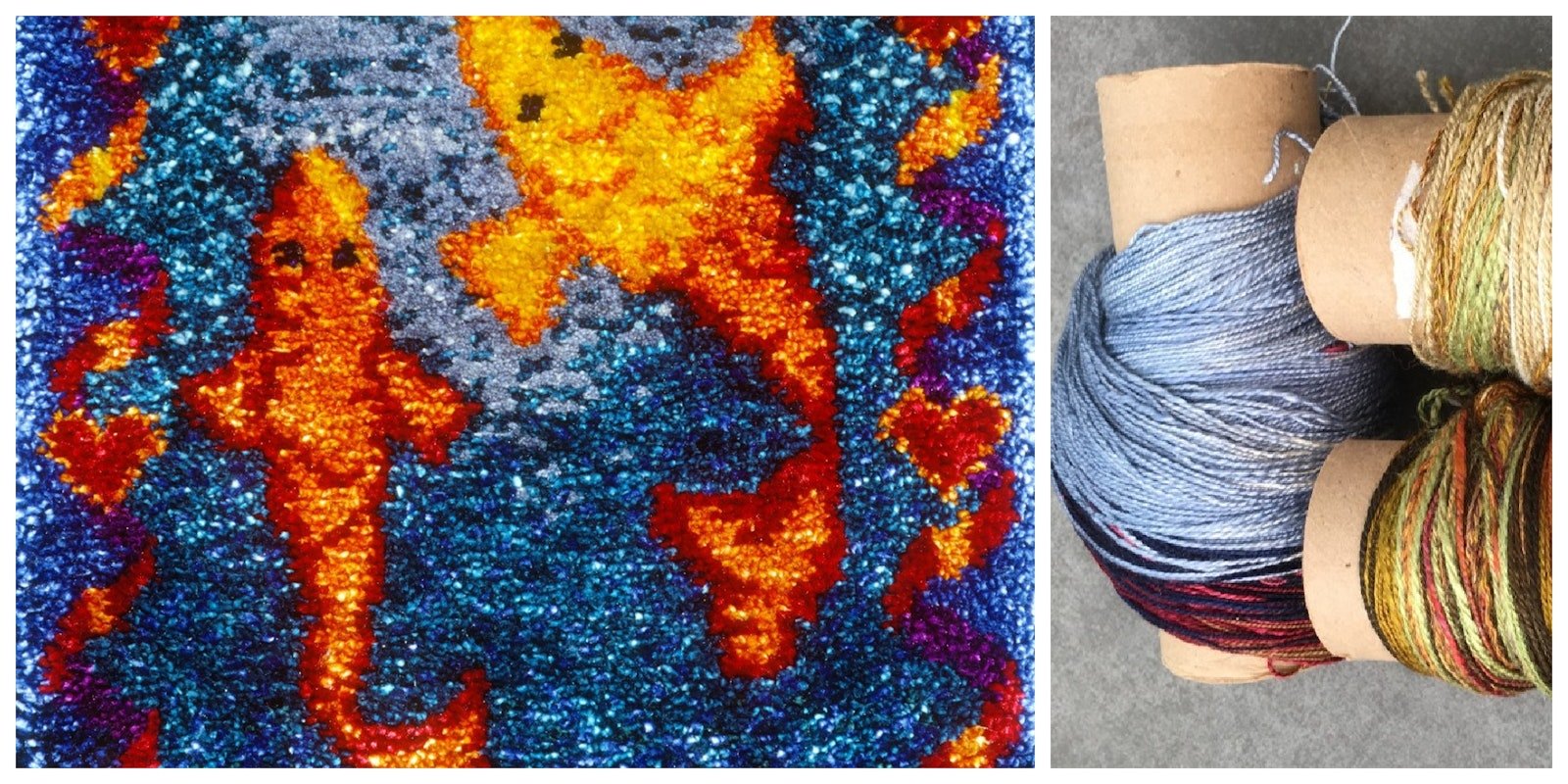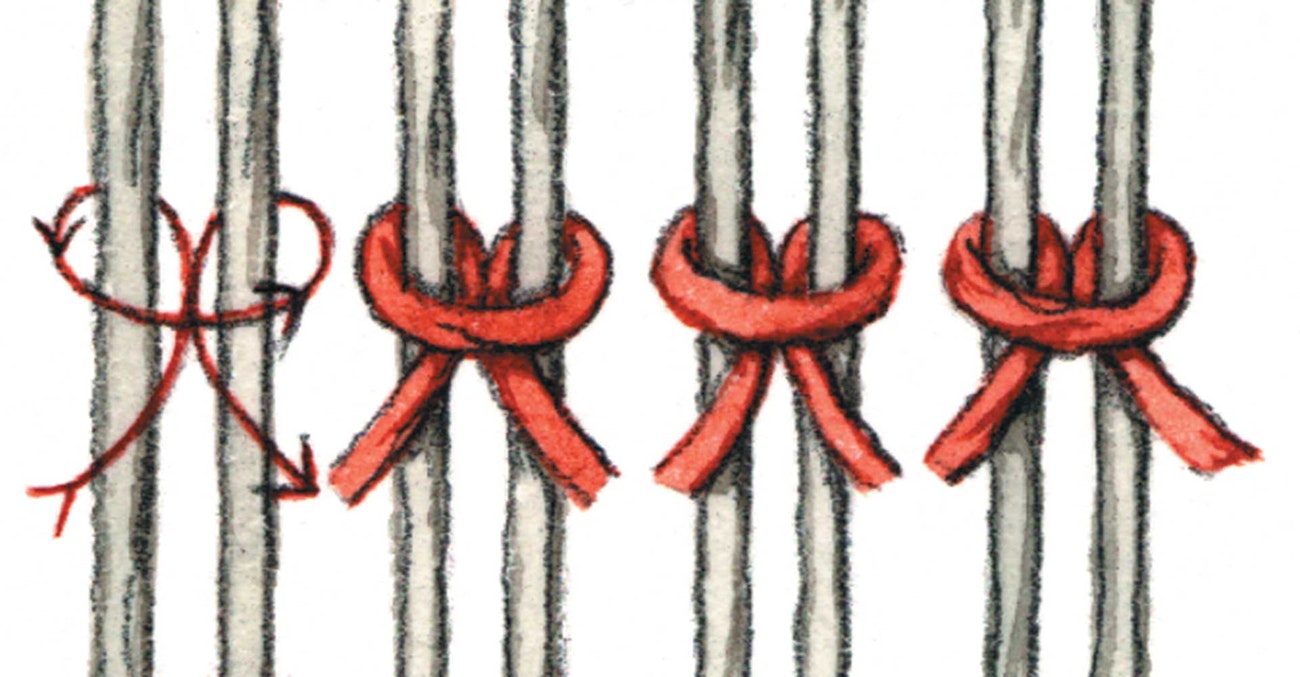Sara Lamb explains how learning to weave knotted pile transformed her thrums into art.
I learned to weave knotted cut pile from Orlo “Duke” Duker (profiled in Handwoven January/February 1992. My first piece on the loom, under his guidance, was made using yarns he gave me. Knotted pile being a slow process, I had plenty of time while I wove that sample to plan my second project.
Enterprises that Require New Yarns
Having been a cloth weaver for 25 years, I had amassed considerable yarns to weave cloth. None of them was suitable for this new technique. Knowing that having a collection of yarns enhances my ability to design and weave more interesting fabrics, I applied that thinking to knotted pile. I acquired many skeins of suitable yarns, in this case silk, and dyed them the colors I expected to need on my project. I wove a small bag with two faces of knotted pile and one face (under the front flap) of soumak with the silk yarns I dyed.
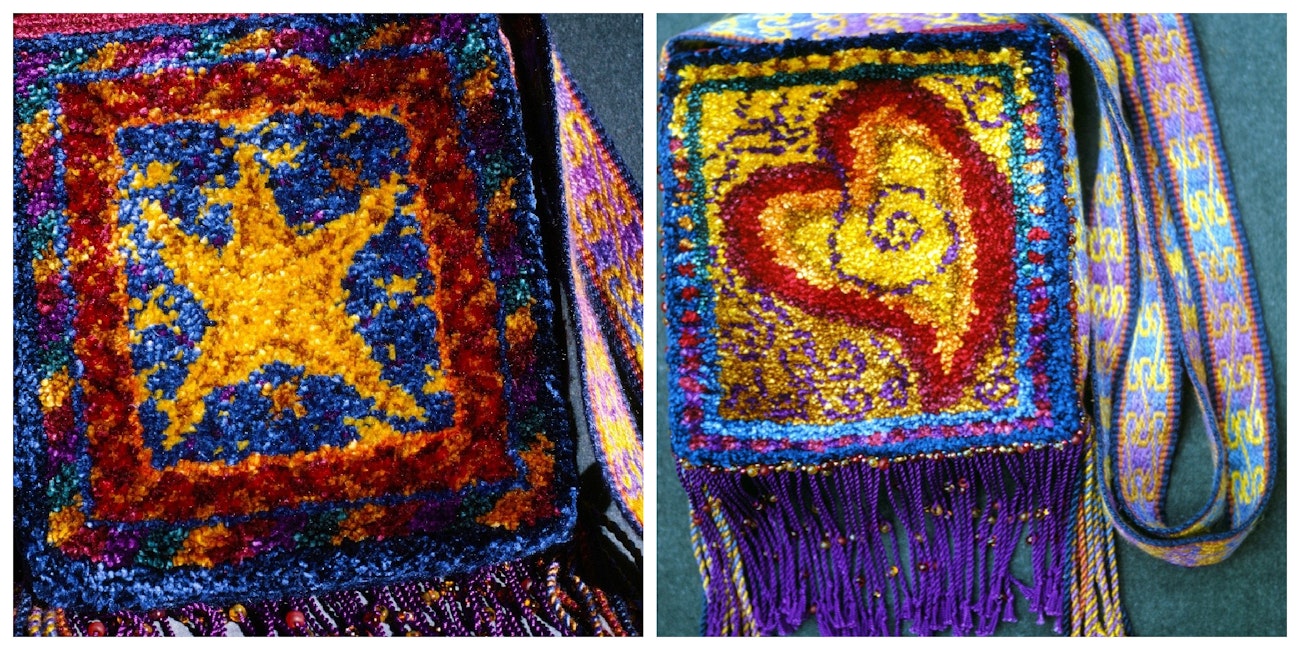
Two of Sara's beautiful knotted cut pile panels.
But, too late smart, I noticed I had lots and lots of all the colors left over. Each bag face had just over 3,600 knots, and there were 2 knotted-pile bag faces. 7,200 knots had seemed like it would need a lot of yarn, but each knot needs only about an inch of yarn at most; with trimming, we’ll say 2" of yarn. That’s 14,400" of yarn needed, or 400 yards total. And that 400-yard total comprises several colors.
Counting knots, I find that one color needed less than 100", or about 3 yards. Another color needed only about 6 yards, meaning I could get by with very little of each color! That pile of thrums leftover from weaving silk fabrics that was always “too good to throw away” was suddenly taking on a whole new meaning.
Thrums in a New Light
I compared the grist of the yarns I was using for knotted pile and found that 3 strands of silk from cloth weaving was equivalent to 1 strand of the heavier silk for pile knots. All I had to do was bundle 3 strands. Added bonus: this gave me far more latitude in blending colors!
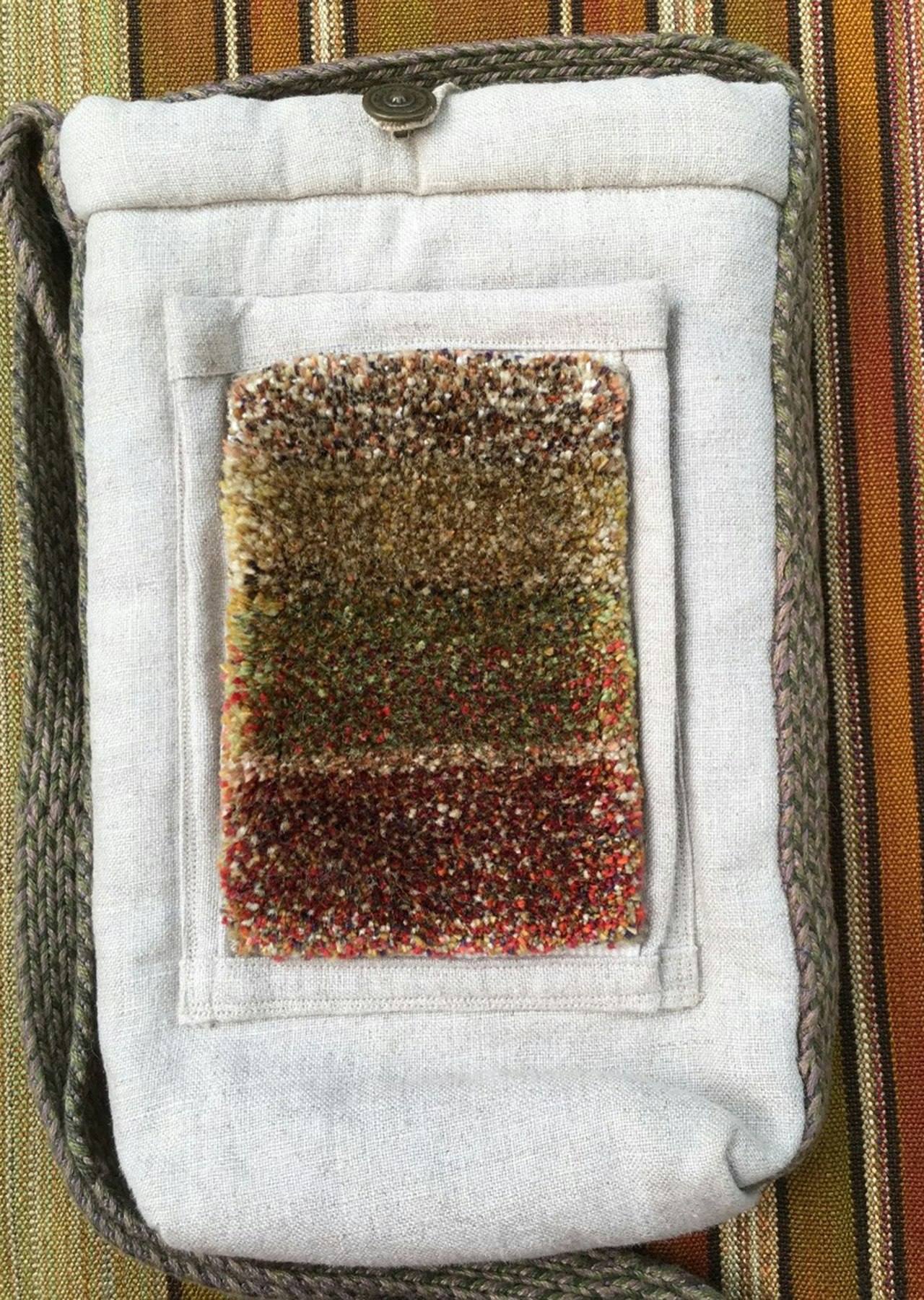
Using thrums such as those pictured above, Sara wove the knotted pile panel for this bag.
The next few pieces used thrums for knots. I made a few mistakes. I did one bag with thrums from a handspun Shetland/silk garment from the book Handspun Treasures from Rare Wools, and that yarn felted into a more solid mass on the surface of the pile weaving; so did yarn from another garment. In the end, I decided to use only silk thrums, which would not felt in the finished piece. And I had plenty of those left over from weaving my handspun, handwoven garments. Now I combine silk thrums to get the right color and grist for any design I plan.
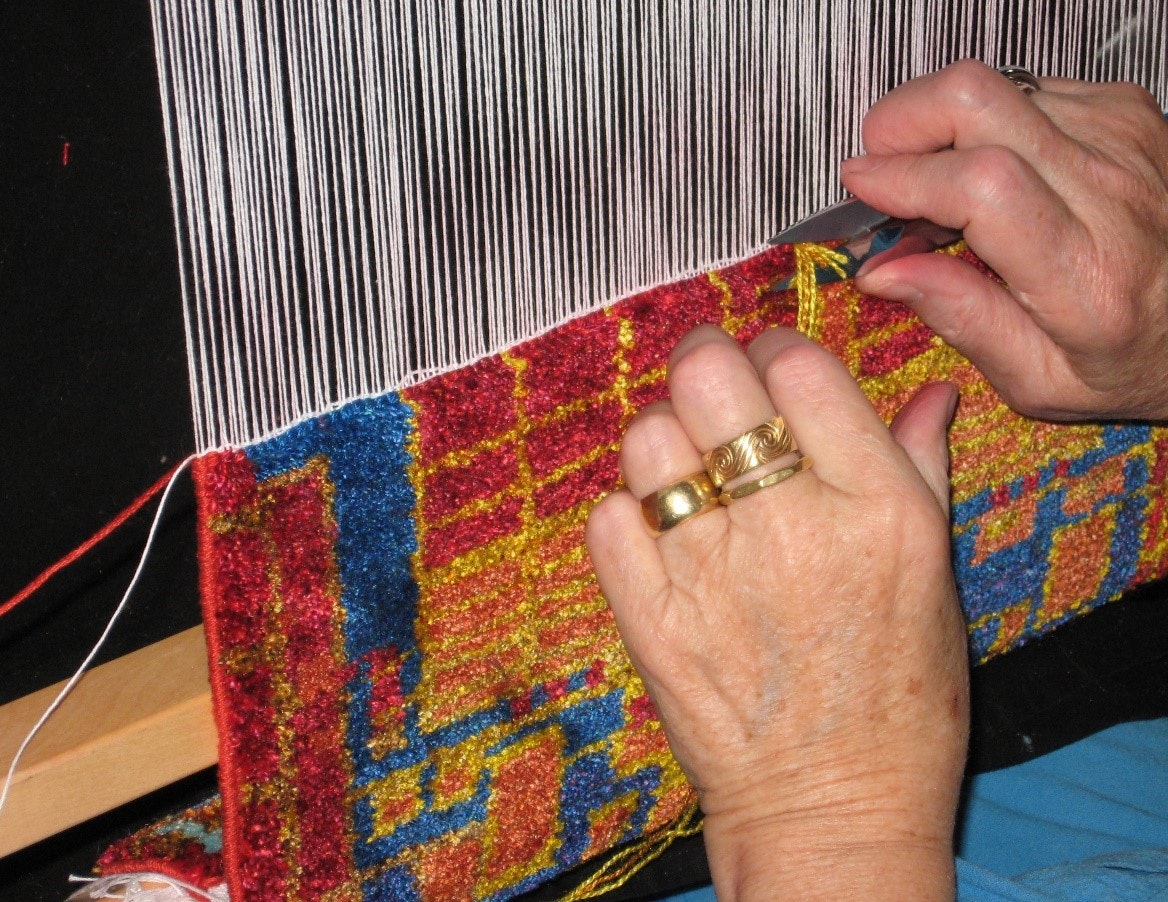
Sara working on a knotted cut pile tapestry. Note the different gold colors in the knot she's tying.
There is one drawback to knotted pile, however: each knot is tied, then trimmed. I drop the trimmings into a bag so the floor does not become littered. Those little piles of trimmings add up, though, many of them less than an inch long—little heaps of ½" and ¼" silk trimmings. Duke used to save his trimmings and eventually used them to stuff a pillow. Can I actually throw these heaps away, knowing they “could be useful”? (Sometimes they go on to another life as accents in a friend's silk paper.)
How to Weave Knotted Pile
Pile knots are wrapped around two adjacent warp ends. Many instructions will direct you to cut a length of yarn, form a loop, and tuck both tails through, but the traditional method I use wastes less yarn and is much quicker once your hands are practiced at the motion. The knots are not structural; they are supplemental wefts held in place by subsequent rows of plain weave.
Illustration of a pile knot from “Weaving Knotted Pile for Beginners” by Sara Lamb, Handwoven November/December 2001.
- Insert the cut end of the yarn between the warp pair
- Take it around to the left behind the left warp
- Bring it over both warps above the inserted end
- Take it around to the left behind the right warp
- Pull the end back through the warp, between the warp pair
- Trim both legs of the knot
For more uses for thrums, see “Use Your Thrums and Weftovers: Dryer Balls.”
Resources: Lamb, Sara. “Weaving Knotted Pile for Beginners.” Handwoven November/December 2001. Lamb, Sara. Woven Treasures. Loveland, Colorado: Interweave, 2009.

